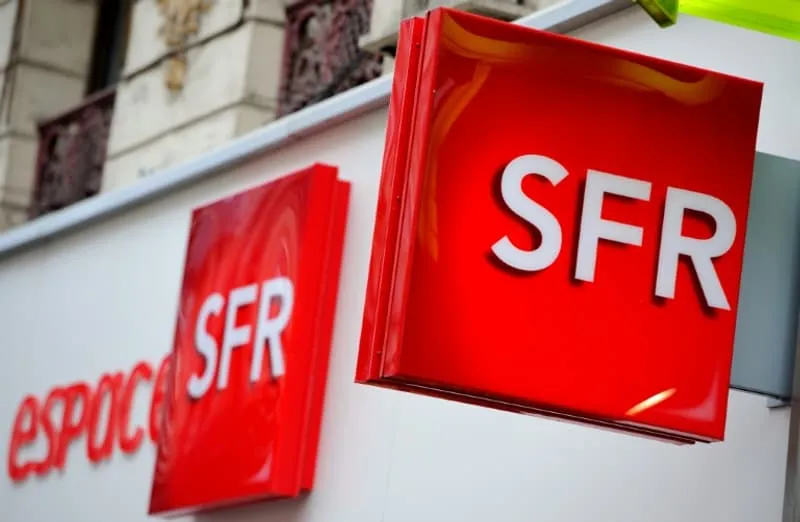Altice founder Patrick Drahi has reportedly placed his French telecom subsidiary, SFR, back on the market—igniting rumours of a sale that could reshape France’s telecom, marketing, and real estate sector. As the second-largest operator with approximately 26 million mobile subscribers, SFR’s fate raises questions about possible buyers, regulatory headwinds, and implications for competition, with Vivendi potentially emerging as a significant player in these discussions.
1. What’s Fueling the Sale Speculation?
First, Altice France recently completed a massive €8.6 billion debt restructuring, reducing its leverage significantly, while cautioning investors with forward-looking statements about future potential challenges and opportunities. This financial cleanup comes after months of selling off non-core properties such as data centres and other assets, strategically positioning the firm within the dynamic data center sector, along with media holdings and tower stakes, alongside the publication of an annual report involving strategic realignment to attract new investments and manage transactions (lightreading.com).
Consequently, Drahi is now considering selling a controlling stake in SFR or even carving it up. Bloomberg put the valuation at up to €30 billion, including debt (energyconnects.com). Therefore, SFR has drawn interest from:
- Domestic rivals: Orange, Bouygues Telecom, Iliad (Free) (energyconnects.com)
- Foreign bidders: E& (UAE), Saudi Telecom Company (STC), Etisalat UAE (cincodias.elpais.com)
- Private equity/infrastructure funds interested in tower or fibre segments (ainvest.com)
Therefore, the question becomes less about interest and more about feasibility—can such a deal actually be completed?
2. Buyer Candidates: Domestic vs. International
2.1: French Players
- Orange, as France’s dominant telecom operator, could benefit from full integration. However, regulators are highly wary of reducing four major players to only three—a change last seriously considered ten years ago (world-today-journal.com).
- Bouygues Telecom and Free (Iliad) may consider acquiring portions—especially SFR’s subscriber base or infrastructure—without triggering antitrust concerns. The Paris Times notes both are preparing scenarios under regulatory guidance (paristimes.com).
2.2: Foreign Interest
- E&, already partially invested in Vodafone, could seek to expand but faces French government scrutiny over national security (cincodias.elpais.com).
- STC or Etisalat is also exploring bids. Yet significant political and security oversight will test any foreign bid (ainvest.com).
2.3: Infrastructure Funds
- Sale of the Infracos tower JV (SFR-Bouygues) for €800 million–€1 billion suggests interest from passive infrastructure buyers, including major telecom companies like Vodafone (towerxchange.com).
- Similarly, fibre assets like XPFibre could be split off and sold separately, appealing to specialist fibre funds (world-today-journal.com).
3. A Split or Consolidation?
Instead of a single takeover, analysts believe SFR is more likely to be carved up:
- Fibre & Towers: Infrastructure segments could go to funds or domestic operators.
- Mobile and Broadband: Subscriber base could be allocated to Orange, Iliad, and Bouygues.
- Media and B2B assets: May be sold separately, as part of Altice’s continued asset-stripping (cincodias.elpais.com).
This approach would mitigate regulatory scrutiny and allow diverse players to share target assets—a strategy Altice appears to favour (cincodias.elpais.com).
4. Regulatory Minefields Ahead
France’s Competition Authority and EU regulators have historically blocked telecom consolidations that reduce competition, particularly to safeguard the telecoms sector from monopolistic practices. Notable examples include blocking the Carrefour acquisition in 2021 and Flowserve in 2023 (cincodias.elpais.com).
Therefore:
- Orange acquiring all of SFR would raise monopoly concerns.
- Foreign bids by E&, STC, or Etisalat may face political opposition under national security rules.
- Infrastructure fund buyouts may pass more easily, though siting deals elsewhere—and regulatory monitoring—will remain.
5. Altice’s Debt Relief Strategy
With €24 billion in debt trimmed to €15.5 billion through asset disposals and creditor swap deals, Drahi now holds a 55% shareholding (world-today-journal.com, ainvest.com, fr.wikipedia.org).
However, €60 billion group debt, including international units, still looms large, affecting marketing strategies due to financial constraints, as highlighted in their annual report, which included several forward-looking statements (totaltele.com). Selling SFR—fully or in parts—could finance further paydowns, stabilize operations, and alleviate transactions-related creditor tensions.
6. Customer Impact & Subscriber Reaction
Rumours alone have unsettled SFR customers, many concerned about service continuity and pricing.
Between 2023 and 2025, SFR lost roughly 2 million subscribers, with some customers citing unreliable service and competitive market pressure (evrimagaci.org).
Acquiring operators may improve coverage, bring 5G advancements, but also risk higher prices, capacity issues, or network downtime during integration. This speaks to broader consumer ramifications of such a sales strategy.
7. Historical Precedents & Market Context
Prior attempts to consolidate France’s telecom market—such as Orange-Bouygues in 2016 and similar approaches considered by Vivendi—collapsed due to regulatory pushback, highlighting the complexities within the telecoms sector (lightreading.com).
Meanwhile, European infrastructure deals involving Morgan Stanley, Cellnex, Vodafone, and Towercos for data centers, towers, and realestate demonstrate the potential for leveraging the properties of subsets of telecom assets (towerxchange.com).
Altice’s prior asset sales—like data centres, media outlets, and fibre networks—set a tone for a segmented divestment strategy aimed at debt reduction before a wider sale lesson.
8. Timeline and Next Steps
- Immediate: Ongoing debt restructuring and safeguard procedure reduces urgency (ecostylia.com).
- Next Few Months: Private conversations and buyer interest should firm up, but no guarantee a deal will be completed.
- Mid-2025: Potential tower/fibre asset spin-offs followed by subscriber carve-out plans.
- Late 2025–2026: Final asset transfers or joint venture agreements, depending on regulatory clarity.
9. What It Means for Stakeholders
- Altice / Drahi: Needed debt relief, asset divestiture, and a clearer business focus.
- Domestic operators: Potential to strengthen position with partnerships like Vodafone or avoid costly consolidation.
- Consumers Might benefit from improved infrastructure, but also face price hikes.
- Investors considering these deals as potential investments may see telecom stocks fluctuate on deal news, particularly Orange, Bouygues, and Iliad.
- Infrastructure funds: Opportunity to invest in data centers, real estate, rural towers, fibre assets, 5G technology, and potentially Vodafone’s infrastructure properties, as detailed in the annual report.
People Also Search For
SFR sale rumours, Altice SFR stake sale, who will buy SFR, Patrick Drahi sells SFR, Orange acquires SFR, Bouygues SFR buy, Iliad SFR merger, SFR tower sale, E& SFR bid, STC SFR acquisition, SFR debt restructuring, SFR subscriber losses, France telecom consolidation, SFR fibre sale, SFR 2025 buyers
External References
navlist containing the following URLs:
- Reuters Breakingviews: Drahi will likely have to split SFR (cincodias.elpais.com, towerxchange.com)
- FT: Altice creditors brace for next showdown over asset sales (ft.com)
Related Internal Links (Reads You May Like):
- Affiliate Marketing: The Ultimate Guide in 2025 [Expert Insights + Proven Tips]
- Start Dropshipping with No Money: A Beginner’s Guide
- Chrome Extensions for Workflow: Boost Productivity
- Top 10 AI Image Generators for Beginners (Free & Paid)
These links strengthen authority and support readers interested in managing social media effectively.


